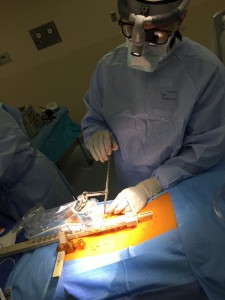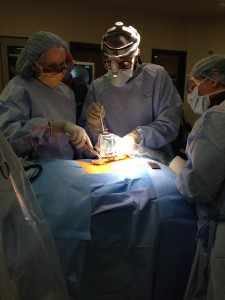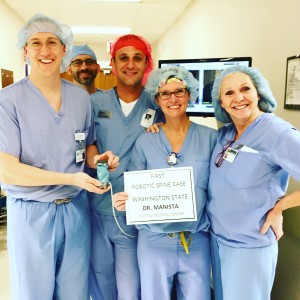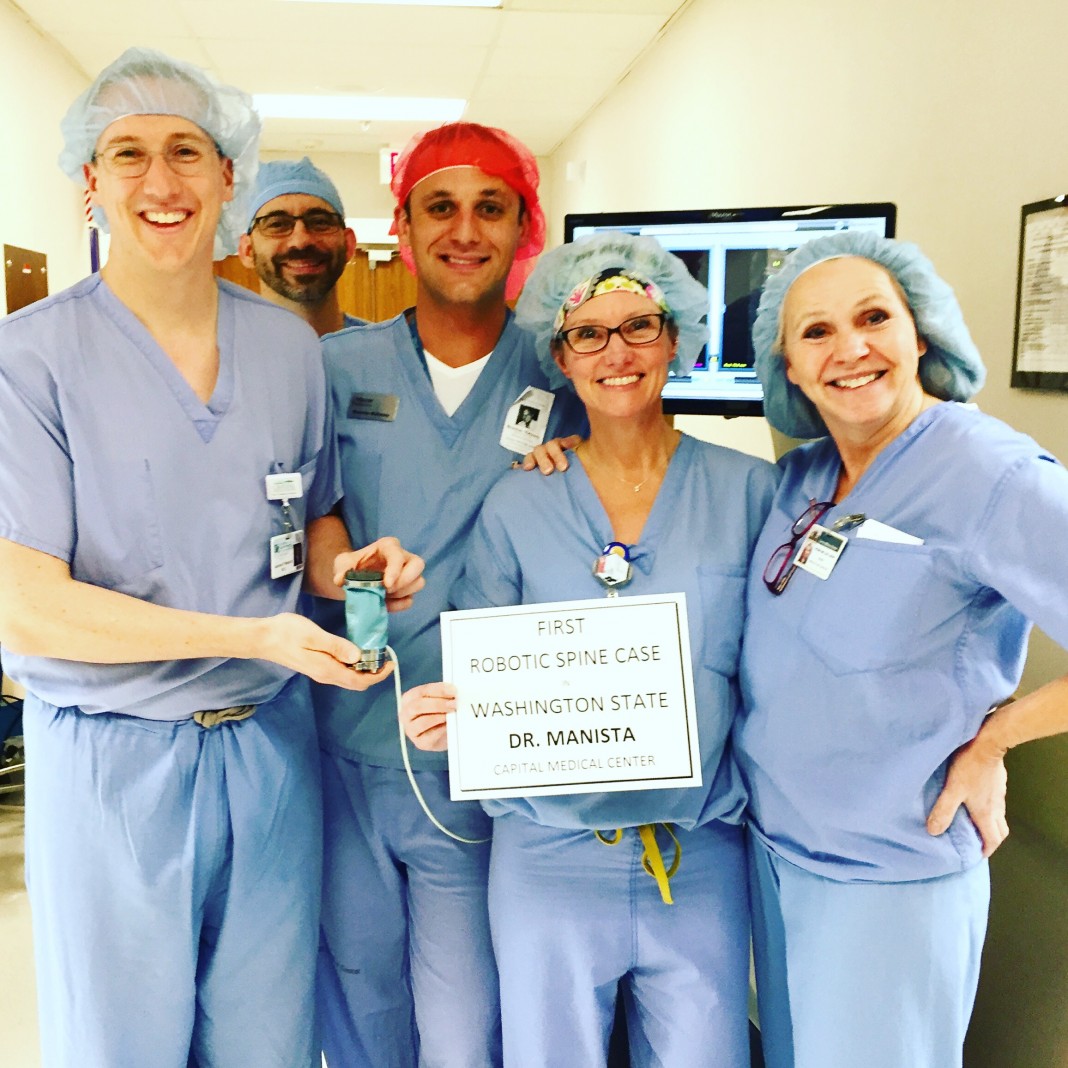Robotics are all the rage these days. From local schools sponsoring competitive robotics teams to drones patrolling our skies to a recently announced robot-tended farm in Japan, robots are here to stay. And, in most cases, these automated, programmable machines are improving people’s lives around the globe.
This holds true in the medical field as well. Robotic advancements in medicine have enabled physicians to perform tasks with increased accuracy and explore new techniques improving recovery times for patients. One such advancement is robotic-guided spine surgery using the Mazor Renaissance® Guidance System. This small robot helps surgeons increase precision over traditional free-hand surgeries using 3D imaging and pinpoint guidance for incisions and surgical implant placements.

While thousands of procedures using the Mazor Renaissance® Guidance System have been performed throughout the United States, the first robotic-guided spine surgery in Washington happened just last fall. Dr. Andrew Manista, an orthopaedic spine surgeon at Olympia Orthopaedic Associates, performed the first breakthrough surgery at Capital Medical Center on October 16, 2015.
After extensive training with the Renaissance® system, Dr. Manista performed two surgeries using the robot that October day with tremendous success. Since the inaugural surgeries, Dr. Manista has performed more than 44 robotic-guided spinal surgeries with an additional 16 performed by his colleagues Dr. Clyde Carpenter and Dr. Yoshihiro Yamamoto. The Oly Ortho surgeons have more planned for the future.
“What’s so exciting about this new technology is how it allows me to do the type of surgery I love to do with increased precision,” shares Dr. Manista.
He notes significant benefits of robotic-guided surgery for both patients and physicians. The biggest advantage is increased precision and significant decreases in the chance for error while placing screws during surgery. “Surgeons have placed over 100,000 screws using this technology, with accuracy of 98% or greater,” shares Dr. Manista. This benefits patients in two distinct ways. First, precisely placed screws result in a decrease in potential long term nerve damage and complications. Secondly, accurate, robotic guided screw placement, helps facilitate smaller incisions at the surgical site.

For surgeons, nurses and operating room staff, using the robot shortens time in the operating room and reduces the amount of bulky equipment in the space, giving more elbow room to work. With the decrease in surgical time comes less anesthesia for patients and less time with an open wound, reducing the chance for infection.
Additionally, the precision achieved through the robotic guidance system reduces the need for fluoroscopy (an x-ray “movie” used during precision surgery). “Using the robot allows our surgeries to be minimally invasive, with greater certainty, and less radiation,” says Dr. Manista. These are all good things when you are undergoing a spinal procedure.
What does this little robot do, exactly? Well, to begin with, it does not perform spinal surgery. Instead, it guides surgeons during the procedure. Prior to all surgeries, extensive planning takes place using multiple forms of imaging and coordination among the surgical team players. The Mazor Renaissance® Guidance System is now a part of the team.
Together, the team creates a pre-operative blueprint of the patient’s spine using 3D imaging and the Renaissance® software. The 3D modeling allows surgeons to plan for a patient’s unique anatomy, any previous surgical hardware or deformations and, the proper sized implant. In essence, the team can try out the procedure in virtual reality prior to the physical procedure.

Once the plan is in place, a mounting platform is chosen. The system has four different rigid platforms that attach securely to the patient’s body during surgery. These platforms allow the robot to interact precisely as planned with the patient and, even if there is slight body movement, the guidance system stays perfectly aligned.
When surgery begins, the robot essentially “pairs” the pre-operative plan and the physical location of the patient’s spine using fluoroscopic images and its advanced software. Once the blueprint and the physical anatomy are linked, the robot can guide the surgical tools and implants to the precise location ensuring the best possible outcome.
Renaissance® is a little guy creating big results. Able to sit in the palm of your hand, the robot has several “arms” which Dr. Manista and his colleagues select based on the procedure they will perform. By instructing the robot where to go, for example to the L4 vertebrae, and which arm to select, the surgeons ensure they are following the surgical plan exactly.
Dr. Manista, who majored in music and double bass performance in college, shares a musical analogy to help illustrate how it all comes together. “Surgery is like a symphony with a first, second, and third movement. The first and second movement go quickly but the third movement is the hardest and longest – placing the hardware,” he explains. “The Renaissance® makes the third movement take so much less time and flow more smoothly for everyone.”

The Spine and Neurosurgery group at Oly Ortho, and others around the country are collecting data and so far the results include:
- 1/3 shorter hospital stays
- Half the surgical revisions of traditional surgery
- All screws safely placed according to pre-operative plan
“This technology is quickly becoming the standard of care because of the precision,” shares Dr. Manista. “It allows us to reach goals in patient care set by our founders over 30 years ago. It’s truly a game changer.”
You can talk with Dr. Manista and his colleagues at the Oly Ortho Westside Clinic to learn more about the Mazor Renaissance® Guidance System.
Olympia Orthopaedic Associates
3901 Capitol Mall Drive SW, Olympia
360-709-6230
Sponsored




















































